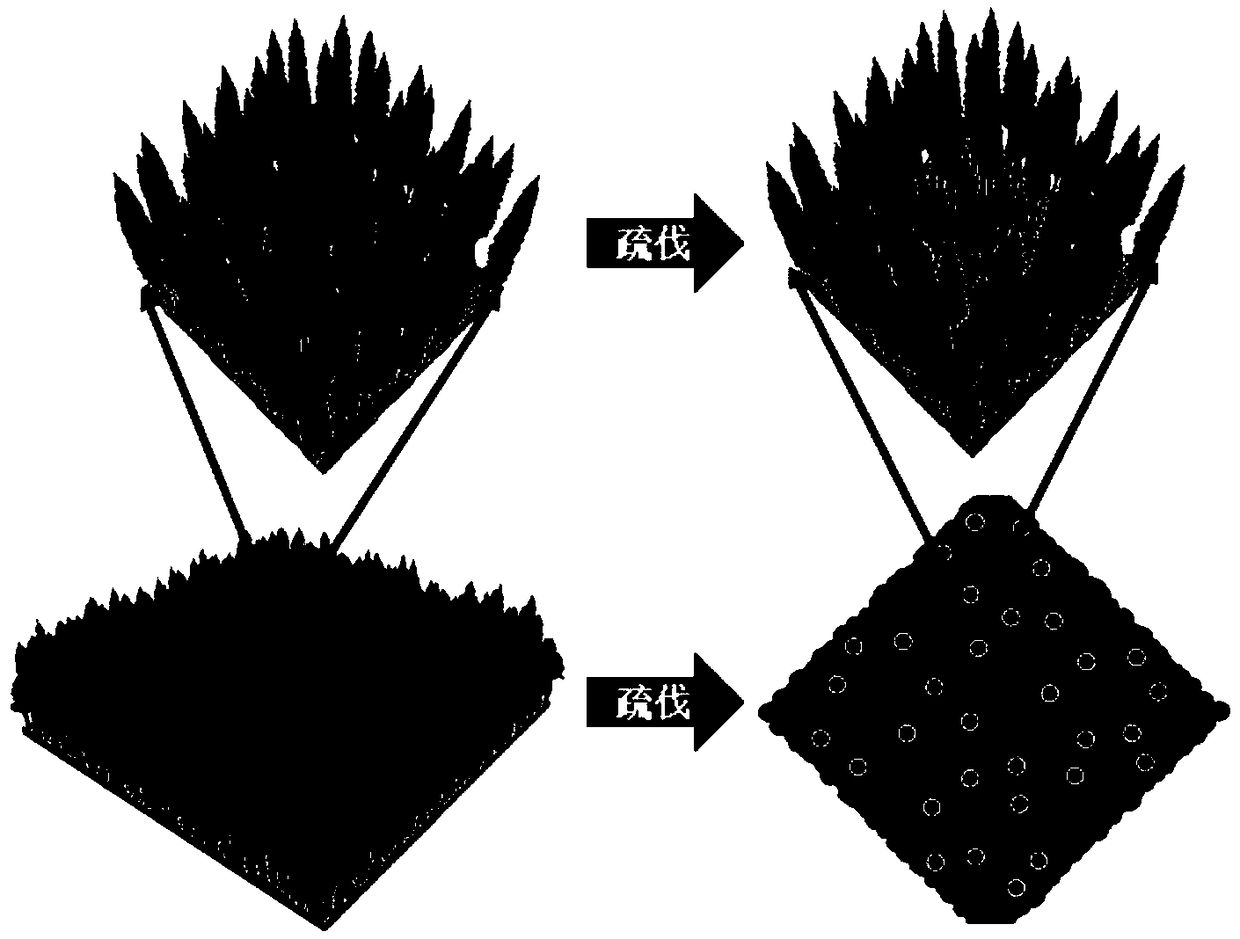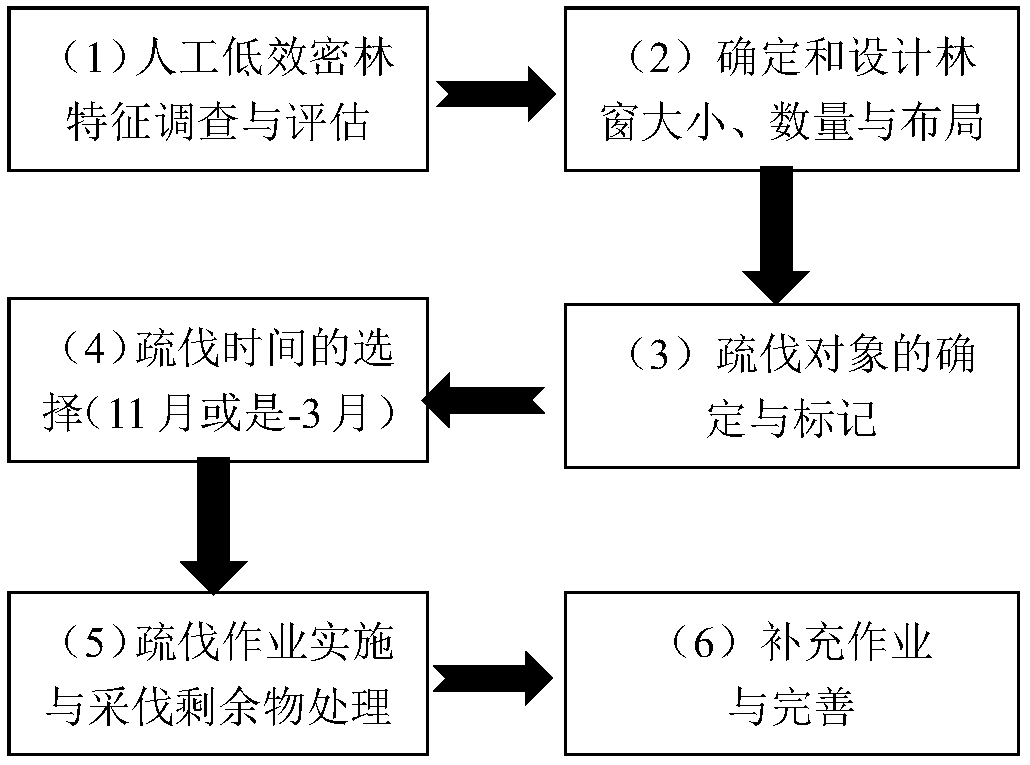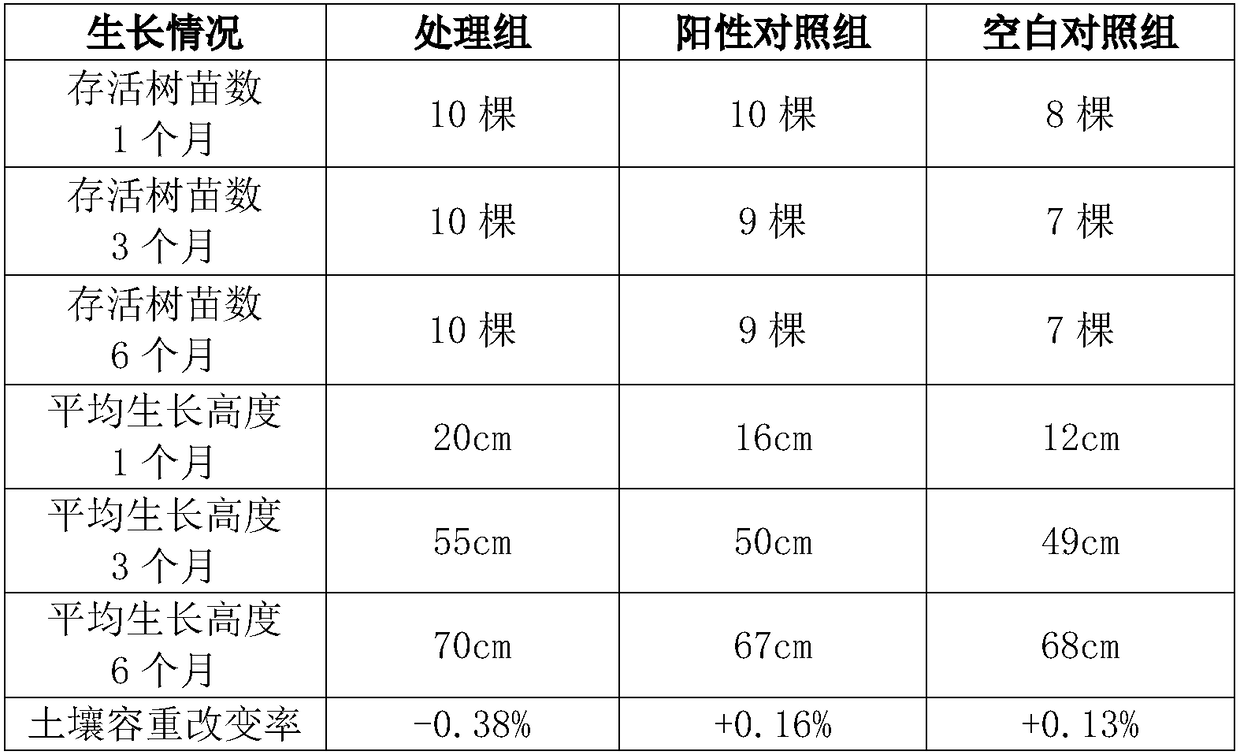Transformation method for ecological public-welfare forest in western Sichuan area
A public welfare forest and ecological technology, applied in fertilization methods, cultivation, fertilization devices, etc., can solve the problems of easy destruction of understory vegetation, excessive forest stand canopy, water and soil loss, etc., and improve the quality of understory microenvironment , Maximize utilization efficiency and promote the effect of natural recovery
- Summary
- Abstract
- Description
- Claims
- Application Information
AI Technical Summary
Problems solved by technology
Method used
Image
Examples
Embodiment 1
[0060] Example 1: Effect of nutrition bag
[0061] In February, in the test field, 30 birch seedlings with a height of 0.5±0.1m were selected and randomly divided into three groups with 10 plants in each group, which were treatment group, positive control group and blank control group.
[0062] The birch saplings in the treatment group were raised in biodegradable nutritional bags for one month, and then transplanted into the soil with bags attached. Among them, the nutrient bag has built-in nutrient soil, and its mass composition is: volcanic ash compressed base nutrient soil 75%, potassium dihydrogen phosphate 6%, urea 7%, rooting powder 1%, and the balance is water. Dosage: Fill all the space in the bag except the root system.
[0063] The nutrient soil component of the treatment group is the conventional N, P, K compound fertilizer component. For the convenience of operation, the whole text of the present invention uses this component of nutrient soil. In actual applicat...
Embodiment 2
[0071] Embodiment two: the effect of bacillus subtilis preparation
[0072] In March, in the test field, 30 strong seedlings of Sequoia sichuanensis with a height of 0.5±0.1m were selected and randomly divided into three equal groups as the treatment group, the positive control group and the blank control group. Plant by the above-mentioned mode of introducing color-leaved tree species. Among them, the treatment group used yellow mud water pulp roots containing bacterial preparations; the positive control group used the same amount of yellow mud water pulp roots without bacterial preparations, and the blank control group did not receive pulp root treatment, and the rest of the planting methods and conditions were exactly the same. After 3 months, the growth of each group was observed, as shown in Table 2.
[0073] Table 2 Comparison of the growth of saplings in each group
[0074] growing situation
[0075] It can be seen from the above table that the survival rate...
Embodiment 3
[0076] Embodiment Three: Transformation of Spruce Plantation
[0077] (1) Implementation time and place: The technical implementation site is Fengyi Forest Farm (Dagou River Basin) of Maoxian Forestry Bureau. In mid-July, 2007, 30 hectares of low-efficiency spruce plantations were selected. The altitude of the experimental site was 2151m, the slope was 14.3, and the soil The type is mountainous dark brown soil.
[0078] (2) Background parameter investigation: The investigation time was at the end of the growing season in 2007, from September to October. Sampling surveys were carried out on 10% of the target area of low-efficiency spruce plantation transformation, and the tree, shrub, and grass species in the center of the forest gap and the edge of the forest and the above-ground and underground biomass were investigated through the sample survey method; in the center of the forest gap and the control forest A miniature temperature and humidity automatic recorder (I-button ...
PUM
 Login to View More
Login to View More Abstract
Description
Claims
Application Information
 Login to View More
Login to View More - R&D Engineer
- R&D Manager
- IP Professional
- Industry Leading Data Capabilities
- Powerful AI technology
- Patent DNA Extraction
Browse by: Latest US Patents, China's latest patents, Technical Efficacy Thesaurus, Application Domain, Technology Topic, Popular Technical Reports.
© 2024 PatSnap. All rights reserved.Legal|Privacy policy|Modern Slavery Act Transparency Statement|Sitemap|About US| Contact US: help@patsnap.com










